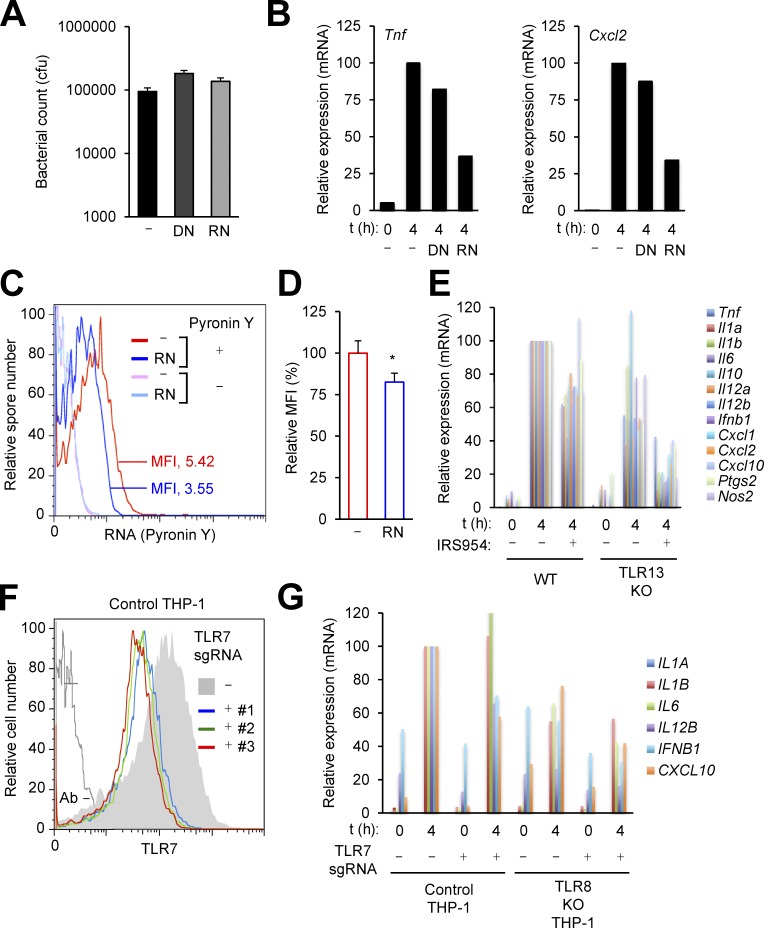Figure 5.
BA spore–induced macrophage gene expression depends on RNA-sensing TLRs. (A–D) BA spores were treated with DNase I (DN) or RNase A (RN). Spore viability was determined after enzyme treatment (A). WT mouse macrophages were exposed to enzyme-treated BA spores at moi of 3; relative RNA amounts for spore-induced genes at the indicated time points after exposure were determined by qPCR, and plotted on a linear scale (B). Enzyme-treated spores were stained for RNA (Pyronin Y) and subjected to flow cytometry (C and D). MFI, mean fluorescence intensity. *, P < 0.05; Student’s t test. (E) Macrophages from WT and TLR13-KO mice were exposed to BA spores at moi of 3. Macrophages were pretreated with IRS954 1 h before exposure. Relative RNA amounts for spore-induced genes at the indicated time points after exposure were determined by qPCR, and plotted on a linear scale. (F and G) Control and TLR8-KO THP-1 cells were infected with lentiviruses expressing Cas9 alone (-) or TLR7-specific sgRNA (+; #1-#3). Macrophages derived from these cells were subjected to flow cytometry (F). Macrophages derived from the indicated cells were exposed to BA spores at moi of 3; relative RNA amounts for spore-induced genes at the indicated time points after exposure were determined by qPCR, and plotted on a linear scale (G). sgRNA #1 was used to disrupt the TLR7 gene (G). Data are from one experiment (A, B, and G) or representative of three experiments (C–E) or two experiments (F) with similar results.

